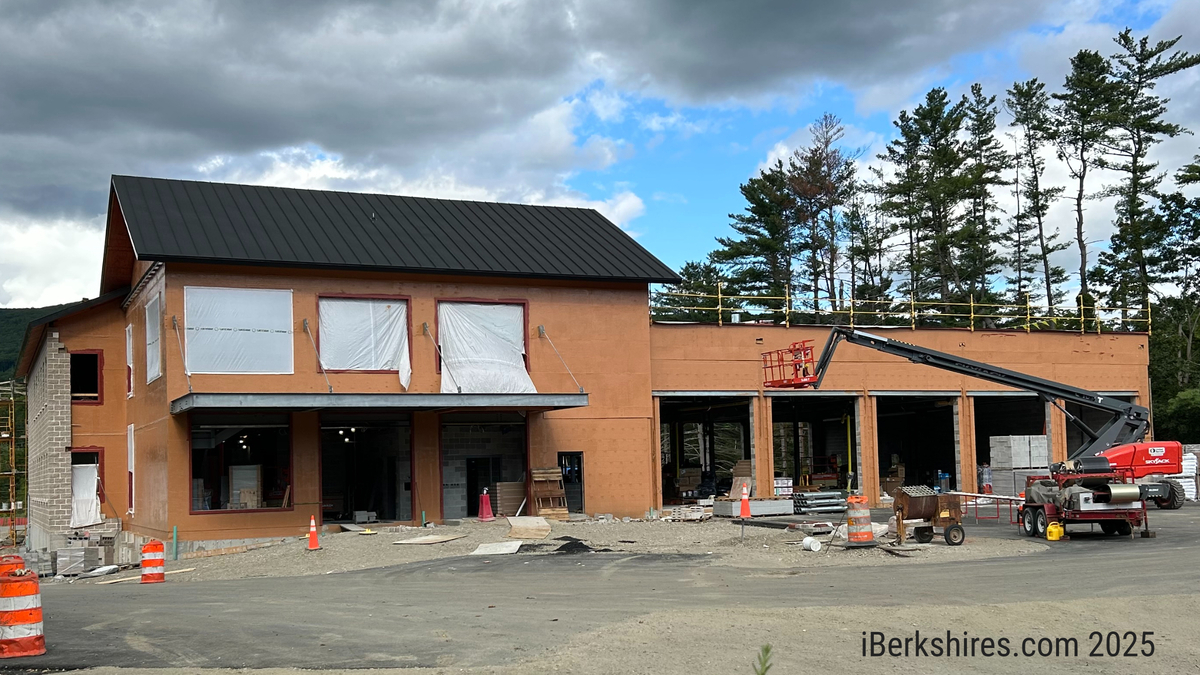Williamstown Taxpayers to Start Paying for New Fire StationBy Stephen Dravis, iBerkshires Staff
05:36AM / Monday, September 01, 2025 | |
 Fire District members will start paying the bond on the new fire station this fiscal year. The $22.5 million station is being constructed on Main Street. Fire District members will start paying the bond on the new fire station this fiscal year. The $22.5 million station is being constructed on Main Street. |
WILLIAMSTOWN, Mass. — A decision residents made in February 2023 will begin to hit their wallets in the current fiscal year.
On Wednesday, the fire district's Prudential Committee held its annual tax classification hearing and learned the district's projected FY26 property tax rate from town assessor Chris Lamarre.
Property owners will pay $1.22 per $1,000 of assessed value in the year that ends on June 30, 2026. That is up from 66 cents per $1,000 in FY25, a jump of 85 percent.
The main driver is the start of bond payments on the new station nearing completion on Main Street, which accounts for most of an approximately $893,000 increase in the district's levy.
Last year, the district raised just more than $987,000 in taxation. In the year ahead, it will need $1.9 million, a jump of 90.4 percent, as it begins paying off the construction bond for the station set to open at the end of December.
At a special district meeting in early 2023, members approved a $22.5 million construction project on Main Street to replace the fire department's cramped, out-of-date Water Street station built in 1950.
The fire district, a separate taxing authority apart from town government, uses Town Hall to send its bills as a convenience for both the district and taxpayers, who receive one bill.
The fire district's tax rate is far smaller than the town's, which funds the schools, Department of Public Works, police department and all other municipal functions. The town's property tax rate in FY26 is $14.20 per $1,000 — about 11 times the fire district rate.
But with both the town and fire district seeing significant increases in the tax levy this year, property owners will see a significant bump in their tax bills.
The median-priced home in town in FY26, which has an assessed value of $453,500, will have a tax bill of $6,440 from the town and $553 from the district.
In FY25, those bills were $6,060 and $290, respectively.
That means in the year that ended on June 30, 2025, the combined tax bill was $6,350. In the year that began on July 1, the combined bill is $6,993, a jump of 10.1 percent.
Wednesday's meeting had nothing to do with setting the levy — the total amount to be raised through taxation. That decision was made at the annual district meeting in May.
The question before the Prudential Committee on Wednesday was how to distribute the levy. And, following past practice and, agreeing with the Select Board's votes on Aug. 11, the Prudential Committee voted unanimously to maintain a single tax rate, rather than putting more of the burden on commercial property owners, while also voting down a residential tax exemption, open space exemption and small commercial exemptions — all mechanisms under Massachusetts law that allow municipalities to tinker with the distribution of the levy.
After the tax classification hearing, Prudential Committee Chair David Moresi and Melissa Cragg, who serves on both the town's and district's finance committees, said this will be a one-time jump in the levy to pay for the new station.
That station, the committee learned on Wednesday, continues to stay on track for a "late Decemberish finish date," according to Bruce Decoteau, the district's construction advisor.
"The second floor framing is pretty much complete," Decoteau said. "Champlain [Masonry] needs more masons, but they're moving along and making progress. Inside, there are a few partitions left, but not many. The elevator has started. … The solar field in the back will start going in, probably, next week."
The Finance Committee's Cragg, meanwhile, told the committee that the station project continues to come in at or below budget.
On the other hand, the Prudential Committee heard some bad news about the department's tower truck, which is currently in Connecticut waiting on $35,000 in repairs. Chief Jeffrey Dias asked the committee to transfer the money out of the district's stabilization account to fund the repairs.
Dias said he expects the tower truck to be out of service for up to two weeks, during which time, the department will continue to rely on its mutual aid partners for coverage.
He also asked for a $70,000 transfer from stabilization to pay for repairs to the department's Engine 2 that previously were funded from the maintenance and operation budget.
The committee voted, 5-0, to transfer $105,000 from stabilization.
Dias told the committee that he plans to repurpose the retired brush truck formerly used by the forest warden.
"The intent is to hang a plow on it this winter," Dias said. "It's definitely good enough to be a yard vehicle. The plow price is not a cheap expense … [but] we'd probably be up to $10,000, if we had a bad winter, to outsource [plowing the new station property]. I'd rather spend $8,000 on a plow that's going to last 20 years."
The Prudential Committee will next be together for a special district meeting it called for Tuesday, Sept. 2, at 4 p.m. | 
